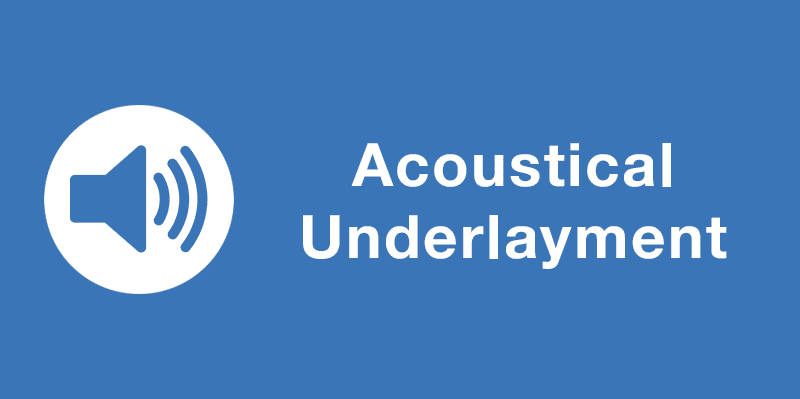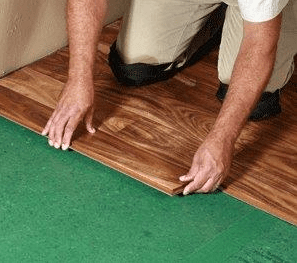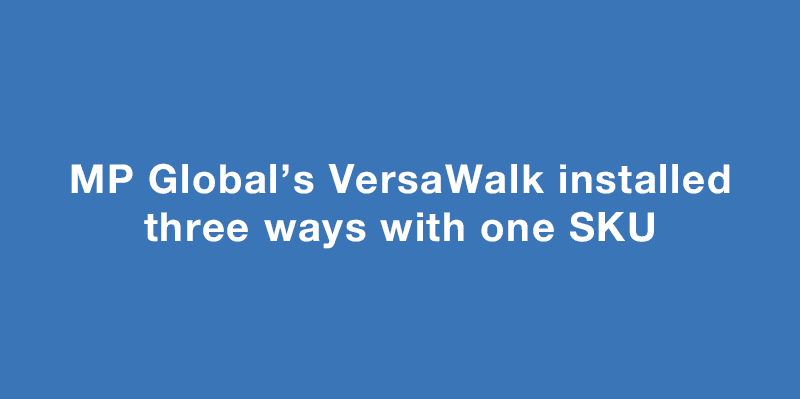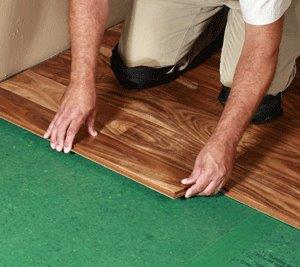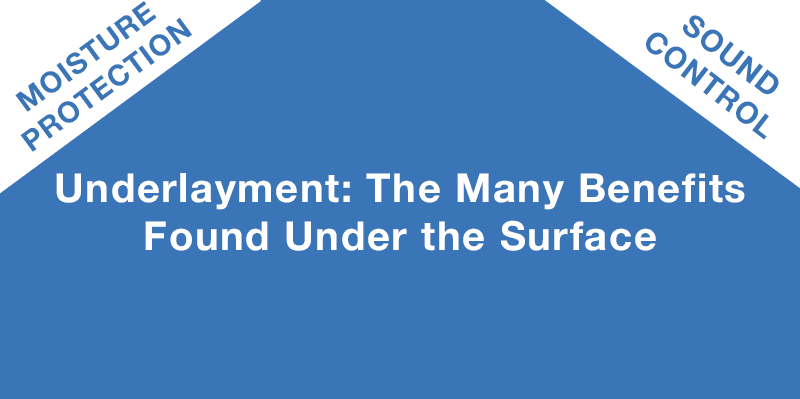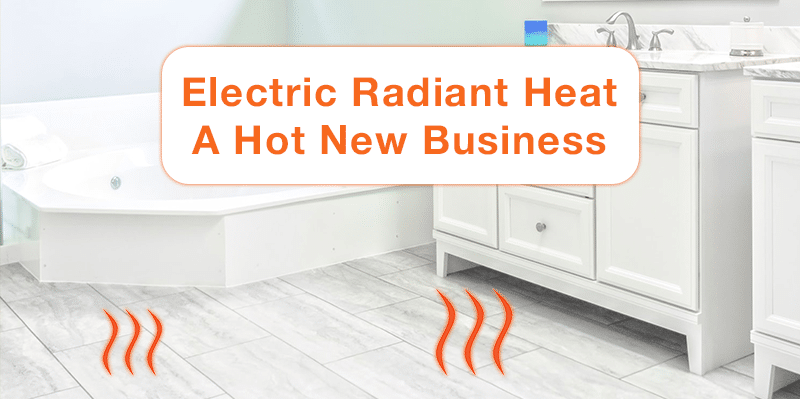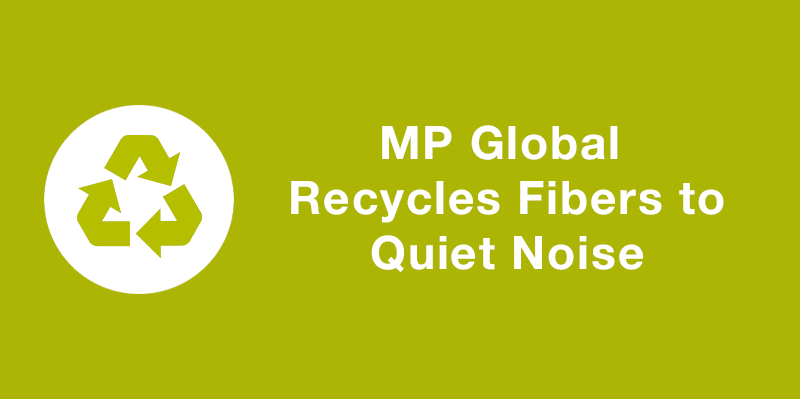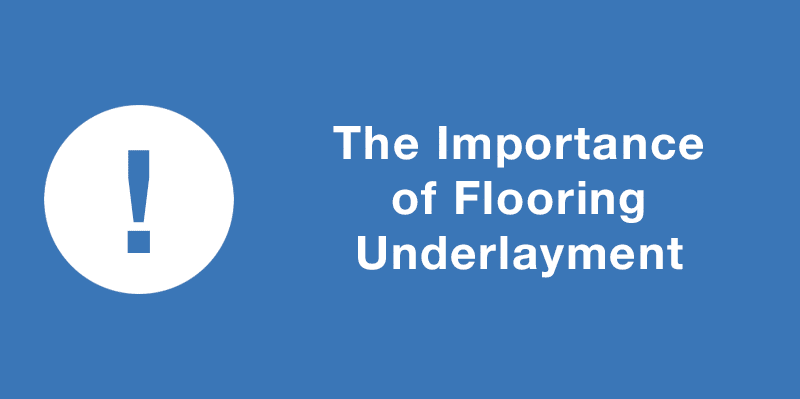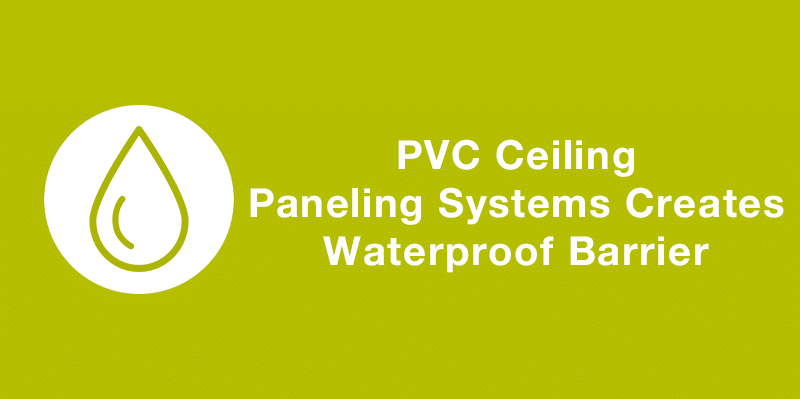From the beginning, laminate products have had a reputation of having a “hollow” sound when walked upon. To their credit, manufactures have spent many hours and dollars on research and development to create ways to make their floors sound more “natural.”
Nonetheless, when it comes to selling laminate flooring, retailers should automatically include underlayments as part of the selling process. Why? As Bob Cummings, sales and marketing manager at Pak-Lite (PLI), said, “Laminate flooring always requires underlayment-there is no option. At least if you want your floor to look, sound and perform as it was designed. Quality laminate flooring underlayments provide a number of benefits that allow your laminate floor to perform as expected.”
According the North America Laminate Flooring Association (NALFA) underlayment has many uses and serves many functions as part of a laminate flooring system. Depending on the product these can include:
- Providing support for the locking system of the laminate flooring panels.
- Providing impact resistance and shock absorption.
- Protection from substrate water vapor.
- Buffering the trans-mission of ambient and impact sound.
- Providing thermal properties.
- Helping to address minor subfloor imperfections, which allows for optimal performance of the laminate floor itself.
While each of these reasons is an important factor in helping to ensure a consumer’s laminate floor will provide her and her family with years of enjoyment, Cummings feel the most important benefit of a quality laminate flooring underlayment is providing water vapor protection. “It will act as an essential protective barrier between the cement subfloor and your laminate floor. A laminate floor exposed to excessive water vapor molecules over time can cause your floor to swell. This could cause buckling or warping. Buckling or warping are almost always a result of moisture and/or water vapor damage.”
Matt Heil, national sales manager for Pregis Corp., said, “Moisture management is important because a significant portion of laminate floors are placed over concrete. Concrete continues curing for a very long time and it releases water vapor during that process. Laminate floors are susceptible to damage when water is absorbed into them.”
Cummings added, “When installing laminate flooring over a concrete subfloor you need to read the manufacturer’s installation instructions very carefully. Those instructions will ‘call out’ the maximum allowable moisture content of the slab. Most often it is indicated by pounds of moisture in the slab. This can be measured using a calcium chloride test kit. The manufacturer may even specify a relative humidity (RH) reading be conducted using a probe that measures the RH in the slab. RH testing is considered more accurate than calcium chloride testing. A good quality underlayment equals or exceeds the protection offered by a 6mil visqueen barrier, which is the industry standard in protection.”Duane Reimer, technical director of MP Global Products, noted, “Moisture management should address moisture that can come from either below or above the underlayment. Quality underlayment for laminate flooring should be able to absorb incidental moisture coming up from a concrete subfloor without swelling or deteriorating and should feature an attached vapor barrier on the top side that keeps harmful moisture away from the laminate floor.”
He added there are some quality fiber underlayments that include the capability to handle moderate amounts of water from accidental spills onto the laminate floor through dissipation over time by perimeter or subfloor evaporation-provided that the source of the moisture is stopped, of course.
For NALFA, the organization points out just like it is important to select the proper floor covering for the job, it is equally important to select the appropriate type of underlayment-especially when it comes to installing a laminate floor. With regards to the moisture issue, the association notes some underlayment products may require a separate moisture barrier be used at time of installation and other products may have a vapor barrier integrated with the underlayment.
Regardless of the type of house or the area of the country, all retailers and salespeople who have been selling flooring for more than a week know there is no perfect subfloor. In fact, the subfloor can and will vary from room to room.
As such, that is another reason why underlayments are so important to laminate floors.
“The underlayment needs to be soft enough to absorb irregularities in the flatness of the subfloor as well as nail-heads and seams,” Heil noted. “On the other hand, it needs to be firm enough to keep the tongue-and-groove locking system from bending, and possibly breaking, when the seams are being compressed under heavy load.”
Reimer agreed with Heil that an underlayment should be both firm enough to support the laminate flooring for the lifetime of the installation and flexible enough to form around subfloor roughness that could, if not addressed, cause laminate tiles or panels to rock or lay unevenly.
When laminate flooring first came on the market in the mid 1990s it required installers to glue the tongue-and-groove to keep the panels in place. Those days are long gone as laminate flooring now comes with a mechanical locking system that allows for a faster, cleaner installation. While it was important to have a quality underlayment even in the early days, NALFA points out “the integrity of today’s laminate flooring is dependent on the locking system remaining intact. The underlayment keeps the amount of deflection to a minimum to support the locking system. Underlayment that is too soft, too thick, or installed in multiple layers could cause the locking system to fail.”
Reimer added, “A carefully calculated compression resistance will also address and help eliminate the ‘clicking’ sound laminate can elicit when walked upon, helping it sound more like glue-down or nailed down wood flooring.”
Quality underlayment that addresses sound can quiet impact sound, dampen ambient sound, and inhibit noise from traveling to the room below,” he explained. “This can be especially important for installations in rental units, condos and multi-family housing. Quality underlayment can also muffle the hollow sound and undesirable clicking noise that laminate can have when walked upon, enabling laminate to sound more like real wood. If the project owner or contractor is specifically concerned with acoustic performance and building codes, check sound ratings of the underlayment. Manufacturers that test their products and get good results typically include them in company literature, on product packaging, and/or on the company website.”
NALFA points out, underlayment can provide sound control for impact sounds (IIC) and air borne (STC) sounds by acting as an isolation break between the laminate flooring and the subfloor. “This breaks the transmission of vibrations being transmitted from one surface to the other, thus improving sound reduction in applications such as multilevel residences.”
In the area of acoustics and buildings this science is narrowed down to impact sound-such as footsteps-and air borne sound-such as speaking.
The association is quick to note, though, “an underlayment is only one component of a complete floor/ceiling assembly. The STC and IIC values stated for an underlayment are typically determined by testing it as part of a complete floor/ceiling assembly according to standards set forth by ASTM International.”
Nonetheless, knowing what STC and IIC and what they stand for is important when helping a customer choose the correct underlayment to go with the laminate floor being purchased.
STC is a single number rating system used to qualify the performance of a floor/ceiling assembly’s ability to reduce airborne sound-speaking, laughing, etc.-transfer within established frequencies. Generally, the higher the STC rating, the better the floor assembly blocks noise from transmission through a wall or floor assembly.
IIC is also a single number rating but it tells how well a floor/ceiling assembly deadens or absorbs impact sounds such as footsteps. The IIC value of underlayment plays the largest role in sound control within buildings. As with the STC rating system, the higher the IIC number, the better the sound is deadened.
Quality underlayments also play a role in keeping the flooring, and therefore the people walking on it warmer in the winter and cooler in the summer as it can provide a form of insulation. These are noted just like the insulation used in walls with an “R-value.”Heil said, “R-value is important because the underlayment provides a barrier between the colder concrete subfloor and the laminate.”
Reimer added, “Incor-porating an underlayment with a good R-value will boost thermal insulation, helping keep floors warmer in the winter and cooler in the summer.”
There are also underlayments that work in conjunction with radiant heating systems. Heil noted, “Prior to installation, we suggest you review your application with the laminate flooring manufacturer. Following its recommendations will ensure the underlayment being used is compatible and will not void the laminate floor warranty.”
For the environmentally conscious consumer, there are underlayments that not only contain recycled materials they are third-party certified. Meaning if you happen to be using laminate on a home or commercial project interested in utilizing a green rating system, such as LEED, there are underlayments out there that can help earn credits because of their earth-friendliness.
In the end, though, it is all about education. The salesperson should know about the various properties of the different underlayments available and explain them to the end user as to why a particular product would work better.
Put simply, a sales associate should inform buyers that installing high-performing underlayment matched to the finished floor will bolster performance and durability of the new floor installation.
Original Article: Floor Trends – December 4, 2014
Posted on: Tuesday, December 23, 2014

